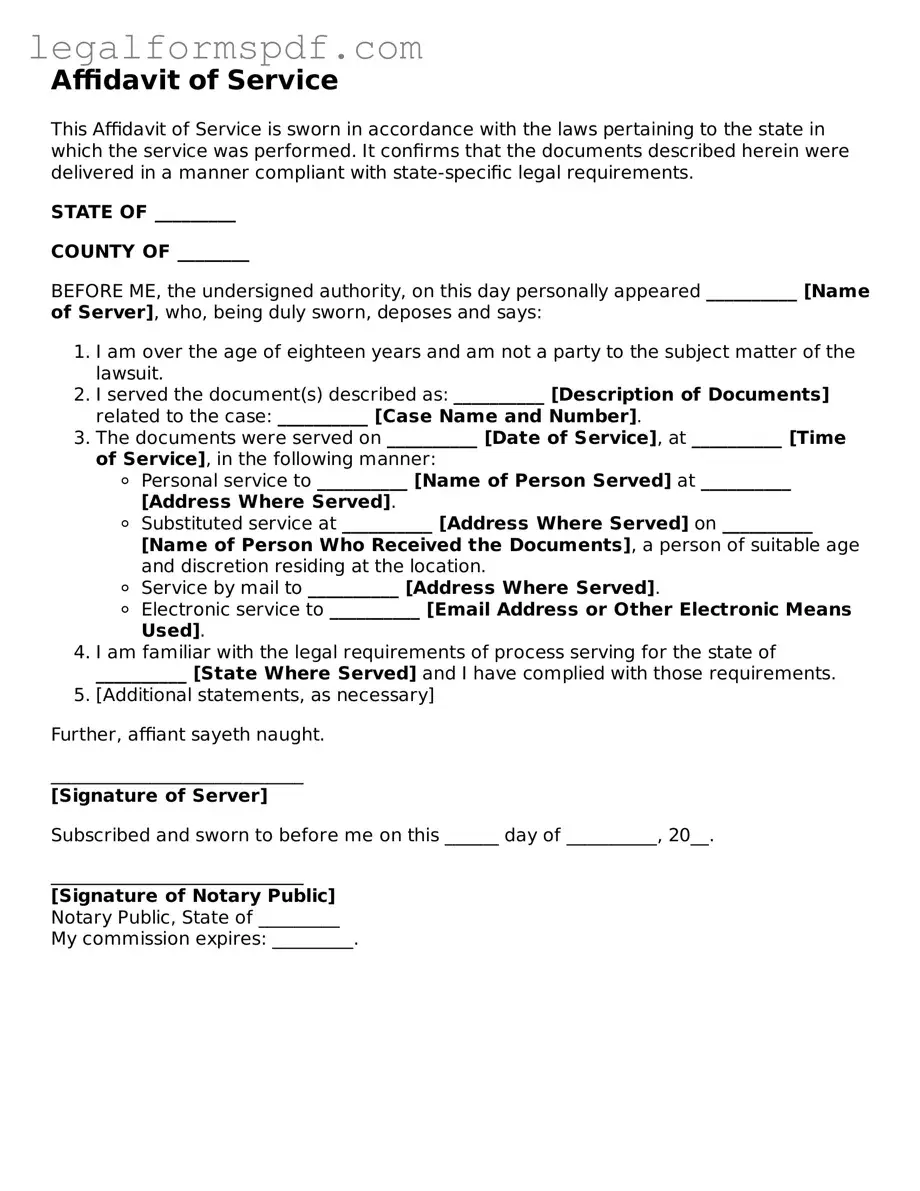What is an Affidavit of Service?
An Affidavit of Service is a legal document used to verify the delivery of legal papers to a party involved in a court case. It serves as proof that the recipient received the documents, ensuring that the legal process can proceed fairly and within the bounds of the law.
Who can serve court documents and complete the Affidavit of Service?
Typically, court documents must be served by an individual who is not a party to the case and is over the age of 18. This can be a law enforcement officer, a professional process server, or in some jurisdictions, a friend or relative. The person who serves the documents completes the Affidavit of Service.
What information is included in an Affidavit of Service?
An Affidavit of Service includes details such as the name of the person served, the method of service (e.g., in person, by mail, etc.), the date and location of the service, and the specific documents served. It also includes a statement by the server swearing to the truth of the information provided, usually signed in the presence of a notary public.
Why is an Affidavit of Service important?
This document is critical because it is the evidence used by the court to verify that all parties have been properly notified of the legal proceedings. It upholds the principle that individuals have the right to be informed of legal actions against them, allowing them to prepare their defense or respond accordingly.
What happens if I don't receive an Affidavit of Service?
If you haven't received an Affidavit of Service but learn that legal proceedings are underway, it is important to act quickly. Contact a legal professional for advice on how to proceed. The court may need to be informed that proper service has not occurred, which could affect the timeline or validity of the case.
Can an Affidavit of Service be contested?
Yes, if one believes the affidavit to be incorrect or fraudulent, it can be contested in court. This typically involves providing evidence that the affidavit is inaccurate, such as proving you were in a different location at the time of the supposed service. Contesting the affidavit can lead to delays or complications in the case, so legal guidance is recommended.
How is an Affidavit of Service filed with the court?
After the Affidavit of Service is completed and notarized, it must be filed with the court handling the case. The process for filing can vary by jurisdiction but usually involves submitting the document either in person, by mail, or through electronic filing systems if available. The clerk’s office at the court can provide specific instructions for filing.
